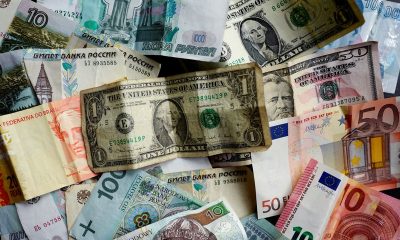Forex
Bruised yen mired near 1986 low with eye on intervention

By Rae Wee and Amanda Cooper
SINGAPORE/LONDON (Reuters) -The yen languished near a 38-year low on the weaker side of 160 per dollar on Thursday, keeping traders on alert for any signs of intervention from Japanese authorities to prop up the currency.
In the broader market, the dollar pared some of its gains from the previous session as U.S. Treasury yields eased a touch, though it held near an eight-week high against a basket of currencies.
The yen weakened another 0.2% to 160.47 per dollar, having fallen to a low of 160.88 on Wednesday, its weakest since 1986.
The Japanese currency has fallen some 2% this month and 12% for the year against a resilient dollar, as it continues to be hammered by stark interest rate differentials between the U.S. and Japan, which has maintained the appeal of using the yen as a funding currency for carry trades.
In a carry trade, an investor borrows in a currency with low interest rates and invests the proceeds in higher-yielding assets.
Still, the yen’s latest slide past the key 160 per dollar level has kept traders nervous over possible intervention from Tokyo, after authorities spent 9.79 trillion yen ($60.94 billion) at the end of April and in early May to push the yen up 5% from its 34-year low of 160.245 then.
“There seems little chance that the Bank of Japan and its allies can shore up the yen without incurring horrendous costs, or jacking up rates to such an extent that they destroy the economy,” Trade Nation senior market analyst David Morrison said.
Analysts said while the risk of intervention has increased, Japanese authorities could be holding out for Friday’s release of the U.S. personal consumption expenditures (PCE) price index before entering the market. Still, any intervention would likely have a limited effect, they said.
“I don’t think Japanese authorities can do a lot and the market has shown that,” said Dong Chen, chief Asia strategist and head of Asia research at Pictet Wealth Management, in an outlook event on Thursday.
“Despite all the verbal and actual intervention they didn’t manage to stop the slide in yen,” Chen said, pointing to the wide interest rate differential. “We continue to expect yen to be weak.”
DOLLAR STRENGTH
Sterling edged away from a more than one-month low of $1.2616 hit in the previous session and rose 0.22% to $1.2649, while the euro rose 0.18% to $1.0699.
The euro is on track to lose roughly 1.4% this month, weighed down by political turmoil in the euro zone in the lead up to France’s snap election set to begin this weekend.
The dipped 0.15% to 105.89, not far from a nearly two-month high of 106.13 on Wednesday.
“Political turmoil in Europe and the higher-for-longer narrative in the U.S. have added to the dollar’s appeal,” said Boris Kovacevic, global macro strategist at Convera.
“For the currency to start giving up some of its year-to-date gains, we would have to see a continuation of the global disinflation trend and for politics to move out of the spotlight.”
The Swedish crown weakened after the central bank held its key interest rate at 3.75% on Thursday, as expected, and said if inflation prospects remain the same, the policy rate could be cut two or three times during the second half of the year.
The dollar was last 0.2% higher at 10.60 crowns.
Elsewhere, the Australian dollar rose 0.3% to $0.6668, drawing some support from Wednesday’s upside surprise on domestic inflation, which had prompted markets to raise the chances of another interest rate hike from the Reserve Bank of Australia this year.
The New Zealand dollar ticked up 0.18% to $0.6094.
Currency moves beyond the yen have been largely subdued for the most part of the week, as traders await Friday’s U.S. core PCE data – the Federal Reserve’s preferred measure of inflation, for further clues on the U.S. rate outlook.
Wednesday was the last day that investors could trade currencies for the quarter, given that spot foreign exchange settlement takes two business days.

Trading of U.S. stocks, however, moved to a shorter settlement cycle last month, known as T+1.
($1 = 160.6500 yen)

 Forex3 years ago
Forex3 years agoForex Today: the dollar is gaining strength amid gloomy sentiment at the start of the Fed’s week

 Forex3 years ago
Forex3 years agoUnbiased review of Pocket Option broker

 Forex3 years ago
Forex3 years agoDollar to pound sterling exchange rate today: Pound plummeted to its lowest since 1985

 Forex3 years ago
Forex3 years agoHow is the Australian dollar doing today?

 Cryptocurrency3 years ago
Cryptocurrency3 years agoWhat happened in the crypto market – current events today

 World3 years ago
World3 years agoWhy are modern video games an art form?

 Commodities3 years ago
Commodities3 years agoCopper continues to fall in price on expectations of lower demand in China

 Economy3 years ago
Economy3 years agoCrude oil tankers double in price due to EU anti-Russian sanctions


























